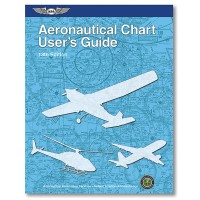ASA Oral Exam Guide: Airline Transport Pilot
 Softcover Book
Softcover Book eBook EB
eBook EB eBook PD
eBook PDOverview
|
The fourth edition of the Airline Transport Pilot Oral Exam Guide has been updated with new references and new and revised questions to reflect the latest regulations and procedures. A new Appendix, ATP—Airplane Multiengine Applicant Qualifications Job Aid, has also been added.
Written to help prepare applicants for their oral exams with FAA examiners. Using a question-and-answer format, each Oral Exam Guide lists the questions most likely to be asked by examiners and provides succinct, ready responses. An excellent study tool for pilots gearing up for their checkride, airman check, or interview. Flight instructors find these an indispensable part of the test preparation process, teaching ATP candidates how to exhibit subject mastery and confidence when under the examiner’s scrutiny. All the subjects an ATP candidate will be tested on during checkrides, career interviews, and aircraft transition rides are covered. Chapters are dedicated to turbine aircraft theory, performance and limitations, airline operational procedures, aeronautical decision making (ADM) and crew resource management (CRM), regulations, and instrument procedures. This guide concludes with 2 appendices that contain questions and answers candidates can expect on an airline-type ride, concerning aircraft systems and limitations. All the information in these appendices is specific to the Beechcraft 1900C aircraft, so pilots can learn the basic components and principles for the type of turboprop aircraft found in many of today’s regional airline fleets. This section may also be used as a workbook, with space provided so readers can reference their airplane operating manual to fill in the blanks to the same questions asked about the BE1900C. Answers and explanations were researched using FAA documents (and are identified so readers know where to go for further study on any given question) as well as through interviews with a variety of airline pilots, 121/135 operators, and examiners. The ATP Oral Exam Guide teaches applicants not only what to expect, but also how to exhibit subject mastery and confidence when they’re under the examiner’s scrutiny. It identifies the candidates' strengths, weaknesses, and gaps in their aeronautical knowledge, which increases study efficiency. |
Specifications
- Author: Michael Hayes
- ISBN: 978-1-61954-620-2
- Edition: Fourth
- Dimensions: 5-1/4" x 8-1/4"
- Page Count: 272 pages
- Weight: 0.70 lbs
- eBook
- ASA eBooks are for one person's use and can be read on up to five devices total using e-reader applications that are compatible with an Adobe ID. To read eBooks on more than one device, the e-reader applications on those devices must be authorized with your Adobe ID.
- To create an Adobe ID, or to recover lost or forgotten ID information like your login or password, (Click Here)
Documents
Version Types
eBook PD - A protected document that looks identical to its print book counterpart. Exact formatting and layout of the print books is maintained (text, images, margins, page breaks, etc.). Displays best on 10-inch or larger screens. Not recommended for small screens (phones) which require you to zoom in and pan around to see the full page. This document is not a .pdf file type. It is a .acsm file type. See http://asa2fly.com/use-ebooks for more details on how to setup your device.
Softcover Book - Printed book with heavyweight cover stock.
eBook EB - A protected document designed for reflowable content. Also referred to as an ePub or "Electronic Publication" format. Easily viewed on both small and large screens. Text, images, and pages will adapt or reflow to fit the screen size of the device, so zooming is not necessary to read. Text size can be adjusted in an ebook reader app. Visit http://asa2fly.com/use-ebooks for more details on how to setup your device.
Q&A
Please note, Aircraft Spruce's personnel are not certified aircraft mechanics and can only provide general support and ideas, which should not be relied upon or implemented in lieu of consulting an A&P or other qualified technician. Aircraft Spruce assumes no responsibility or liability for any issue or problem which may arise from any repair, modification or other work done from this knowledge base. Any product eligibility information provided here is based on general application guides and we recommend always referring to your specific aircraft parts manual, the parts manufacturer or consulting with a qualified mechanic.






























